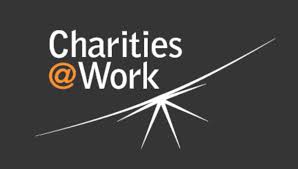Developing Employee Powered Community Engagement
By Billy Weisman

Developing Employee Powered Community Engagement
I am excited and grateful for the opportunity to be included amongst a diverse group of professional givers to exchange thoughts on growing workplace giving. While each leader will surely bring individual experience and expertise representing corporations, vendors and/or cause organizations, there is no doubt that all have a collective, common interest in growing good together.
PERSPECTIVE:
Let us begin by looking at the big picture of giving at-large, both from a historical and dimensional perspective.
Historically, the individual practice of giving dates back thousands of years, in the form of faith-based giving: tithing and alms. Little had changed until the 1900s, when wealthy industrialists, such as Andrew Carnegie and John D. Rockefeller, introduced “modern philanthropy”, which is private money for societal good, building public institutions, i.e. libraries, museums, parks, etc. In the 1950s, the general notion of corporate social responsibility or CSR emerged, initially focusing on corporate ethics and citizenship. Fifty years passed until the practice of workplace giving was born at the turn of the 21st century.
This March, we will attend the 14th Annual Best Practice Summit, which places the workplace giving industry in the adolescent development stage, building muscle and searching for a more relevant giving voice.
Dimensionally, the giving universe reports $335 billion annually. Individual giving accounts for $250 billion, while corporations report employees give no more than $5 billion. That means less than 2% of all individual giving is done in the workplace. These statistics are not meant to diminish or minimize the relevance of workplace giving, they are intended to illustrate and identify the tremendous opportunityto increase dollars given by engaging more employees in the workplace.
TRANSFORMATION:
Transformation is a measurable change over time. Planned change begins by identifying the desired outcome. The transformational thinking and planning that follows needs to be aligned with a defined set of objectives, making implementation a measured and managed process.
Generally, the common goal for workplace giving is to increase the participation rate, as well as total dollars raised, i.e. more givers giving more. The challenge is to transform the workplace giving “experience”, while still supporting the function and spirit of today’s programs, thus transforming the transaction based programs to a more inspired lifestyle experience.
Adam Grant, author of Give and Take: Why Helping Others Drives Our Success, defines people within 3 categories:
1. Givers – give without receiving
2. Matchers – give when they receive
3. Takers – receive without giving
In order to pave a path to have more givers giving more we need to:
1. Respect the current base of givers. Reward and recognize their efforts in a contemporary and relevant manner.
2. Grow Organically… within each company; encourage the matchers to reciprocate through Dollars for Doers incentive programs.
3. Go Social… leave the building per se and fit giving within peoples’ overall lifestyles. Simplify the process for the employee and make it supportive of their choices within their communities. If it’s important to them, it’s important to us.
EMPOWER THE DOING:
Empowerment is enabling the ability to DO. We must provide the means (funds, services and programs supported by science) needed to enable transformation within the giving industry.
1. Funds – NO new money is needed. Currently there are enough funds in the system, meaning it’s more about the reallocation of existing budgets. Overall, it’s a shift from major to micro giving through individuals. This will result in a more immediate and longer standing impact.
2. Services – The introduction of technology services as a catalyst and a backbone to the transformation in workplace giving has jump started the transformation. However, technology alone is not the answer.
3. Research &Science – The basic scientific evidence supports employee empowered transformation. Giving produces endorphins, it is a positive experience. Giving is contagious. Nothing draws a crowd, like a crowd. As little as $5.00 is a meaningful gift. It doesn’t take much to make a difference.
In conclusion it’s about recognizing and rewarding the current giving base, encouraging the reciprocators with Dollar for Doer programs and attracting the millennials and social community with a more relevant experience enabled by mobile tools.
Empowerment is the strategy for transformation, but it is the tactical execution and implementation of that plan that will ultimately materialize success.
Meaningful change is always a collaborative effort. It requires hard work and it takes time. Companies need to be committed and leaders need to be courageous. External service partners, acting as change agents, need to support revolutionary thinking with an evolutionary and accountable path.
Let’s think big, act small and do good often.
So much for thought leadership… it’s time to Do More!
DoTopia looks forward to being at the Charities@Work Summit on Employee Engagement in Corporate Citizenship, March 23-25 in New York. To learn more please click here and register for the 2015 Charities@Work Summit.
________________________________________________________________________________
Billy Weisman | Philanthropreneur; Founder and CEO of DoTopia
“Billy doesn’t go with the flow, Billy starts the flow.” As the visionary values based leader of Weisman Enterprises Inc., he successfully founded many businesses that provided outsourced, non-core, small transaction management services to Fortune 500 Companies. At the same time he has served as a founding member of numerous local, national and global not-for-profit social endeavors. DoTopia is the result of his “second half life challenge” to integrate his passion, resources and talents for creating the ways and means to make the world a better place by supporting the good work of others.

